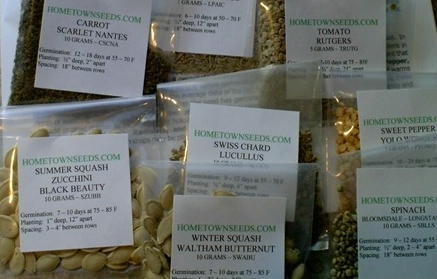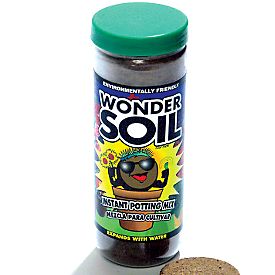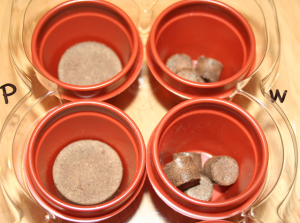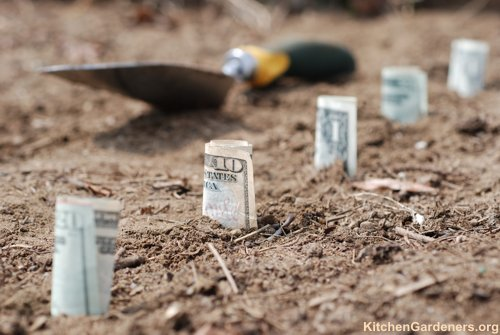Chemistry of Gardening: What nutrients do plants need?
15.3 years ago alfalfa pellets, fertilizer, outdoor seed starting
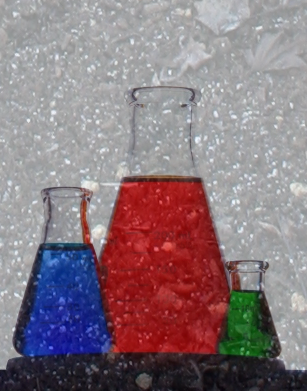 If I ask my four year old what it takes for a plant to grow she can quickly respond with response, “Sun, water, air, and soil” This is a great answer for photosynthesis since plants need energy from the sun. They leverage the carbon dioxide (CO2) from the air and water (H2O) to create starches and sugar. Now the soil part of this answer is where things get a little more complicated. Soil gives plants the ability for roots to expand and grow but also provides many nutrients to help them as well.
If I ask my four year old what it takes for a plant to grow she can quickly respond with response, “Sun, water, air, and soil” This is a great answer for photosynthesis since plants need energy from the sun. They leverage the carbon dioxide (CO2) from the air and water (H2O) to create starches and sugar. Now the soil part of this answer is where things get a little more complicated. Soil gives plants the ability for roots to expand and grow but also provides many nutrients to help them as well.
Similar to humans, plants need various minerals to live healthy lives. The primary macronutrients Nitrogen (N), Phosphorus (P), Potassium (K) are required to sustain life. These are the nutrients that plants consume significant amounts which is why these are advertised in big letters on the outside of packages of fertilizer.
MACRONUTRIENTS – PRIMARY
| Nutrients | Benefits | Signs of Deficiency | Sources (N-P-K) |
| Nitrogen (N) | Provides energy to allow vegetative growth. Leafy plants can’t get enough, root plants need very little, fruiting plants need plenty in beginning but too much later in growth cycle will result in big/tall fruitless plants. | Light green to yellow leaves; growth stunted | Bloodmeal (14-0-0) Alfalfa meal (7-3-4) Soybean meal (6-1-2) Cottonseed meal (6-2-2) Fish emulsion (5-2-2) Chicken Manure (3-4-3) Compost (1-1-1) Cow Manure (.2-.2-.2) |
| Phosphorus (P) | Makes plants more stress resistant, allows for fast growth, encourages bloom and root growth. | Red or Purple leaves; cell division slowed | Bonemeal (4-12-0) Chicken Manure (3-4-3) Alfalfa meal (7-3-4) Compost (1-1-1) |
| Potassium (K) | Helps with photosynthesis process, immunities to disease, and increased quality of fruit. | Vigor reduced; susceptible to disease; thin skin; small fruits | Alfalfa meal (7-3-4) Greensand (0-0-3) Wood ash (0-1-3) Chicken Manure (3-4-3) Compost (1-1-1) |
We could live off a simple food like gummy bears for quite a while, but our quality life will decrease once we picked up scurvy and exhibit significant bone and muscle loss. The same idea goes for plants, they can live simply on the primary macronutrients but they will live poor and possibly fruitless (literally) lives. This is where the secondary nutrients come in. With the exception of Calcium, these are not consumed in nearly the volumes as the primary macronutrients though supplementation may be required.
MACRONUTRIENTS – SECONDARY
| Nutrients | Benefits | Signs of Deficiency | Sources |
| Calcium (Ca) |
Helps with cell wall structure imperative for strength of plants |
Growing points of plants damaged | Dolomitic limestone, gypsum, egg shells, antacids |
| Magnesium (Mg) | Required as part of the chlorophyll required for photosynthesis | Yield down; old leaves white or yellow | Epsom salt, Dolomitic limestone, organic material |
| Sulfur (S) | Required for to allow plants to create protein, enzymes, and vitamins. Helps with seed, root growth, and resistance to cold. | Light green to yellow leaves; growth stunted | Rainwater, gypsum |
Finally are the macronutrients, these are the nutrients that most of the time, as long as you are not growing with hydroponics. should exist in your soil and rarely need to be supplemented due to the small amounts that are consumed by plants, nevertheless are still very important for plant growth.
MICRONUTRIENTS
| Nutrients | Benefits | Signs of Deficiency | Sources |
| Boron (B) | Helps in production of sugar and carbohydrate s. Essential for seed and fruit development. |
Small leaves; heart rot (corkiness); multiple buds | Organic Matter and borax |
| Copper (Cu) | Helps in plant reproduction | Multiple buds; gum pockets | Copper sulfate, neutral copper |
| Chloride (Cl) | Helps with plant metabolism | None known | Tap water |
| Iron (Fe) | Helps in formation of chlorophyll | Yellow leaves; veins remain green | Iron sulfate, iron chelate |
| Manganese (Mn) | Helps in breakdown of carbohydrates and nitrogen | Leaves mottled with yellow and white; growth stunted | Manganese sulfate, compost |
| Molybdenum (Mo) | Helps in breakdown of nitrogen | Varied symptoms | Sodium molybdate, compost |
| Zinc (Zn) | Regulates growth and consumption of sugars by the plant | Small, thin, and yellow leaves, low yield | zinc oxide, zinc sulfate, zinc chelate |
Nutrient Deficiency Information from “The Vegetable Gardener’s Bible”
Now you are armed with plenty of information, though unfortunately you can not act on any of this without knowing the chemical composition of your soil. If you simply went by the signs of deficiency (for example yellow leaves) could be caused by one or many nutrient deficiencies. Fortunately you can get this information to act on by running a soil test on your soil. There are a couple options for this if you are simply concerned about primary macronutrients there are cheap DIY home tests, electronic testers, or you can send a sample to a soil lab to give primary/secondary macronutrient and micronutrient levels and recommendations to get your soil back on track. You may also want to check with your local municipal office they may have a cheaper/free option available to you.
Just remember, your perceived lack of a green thumb my have nothing to do with your ability but the chemistry of soil you are working with.
Tags: alfalfa pellets, cheap, compost, garden seeds, led, organic vegetables, outdoor plants, vegetables
Gardening products I would buy if I wasn’t so cheap
15.3 years ago cheap, compost, germination, indoor seed starting, tomato
Today I got my Gardener’s Supply Companycatalog, this particular catalog is dedicated to items to assist you with your gardening habit. You should be able to guess from this site I do my best to resist buying anything for the garden I absolutely need, otherwise I make a cheaper alternative. Well the point of this post is to show what I would like to get if I wasn’t as disciplined.
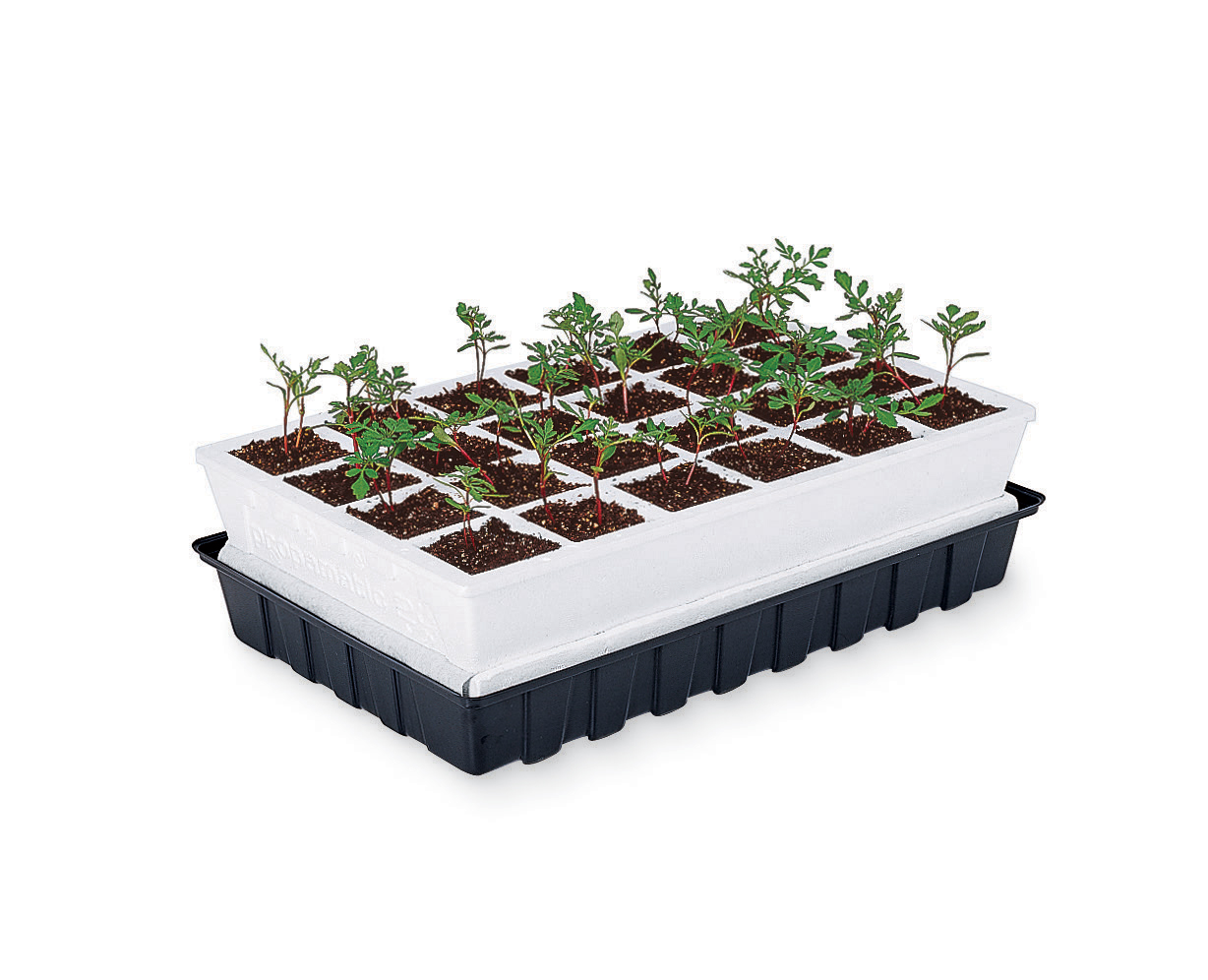 |
They sell these Accelerated Propagation System (APS) seed starting kits which have all the basics you expect from a seed starting kits you would find at your local garden store. They include 6 to 40 cells to plant seedlings and a clear plastic dome to help raise the humidity to provide extra moisture for the tender seedlings. The bonus in this setup is it also contains a reservoir which holds enough water to keep them moist for up to a week. With the help of an elevated platform and capillary matting provides just the right amount of water to your plants. At just $19.95 for the 40 and 24 cells sizes this is one purchase I am still considering, since I never have finished my automatic watering system on my computerized grow box and this makes much better use of space than my plastic tub, newspaper pots, and daily watering method I am doing now. |
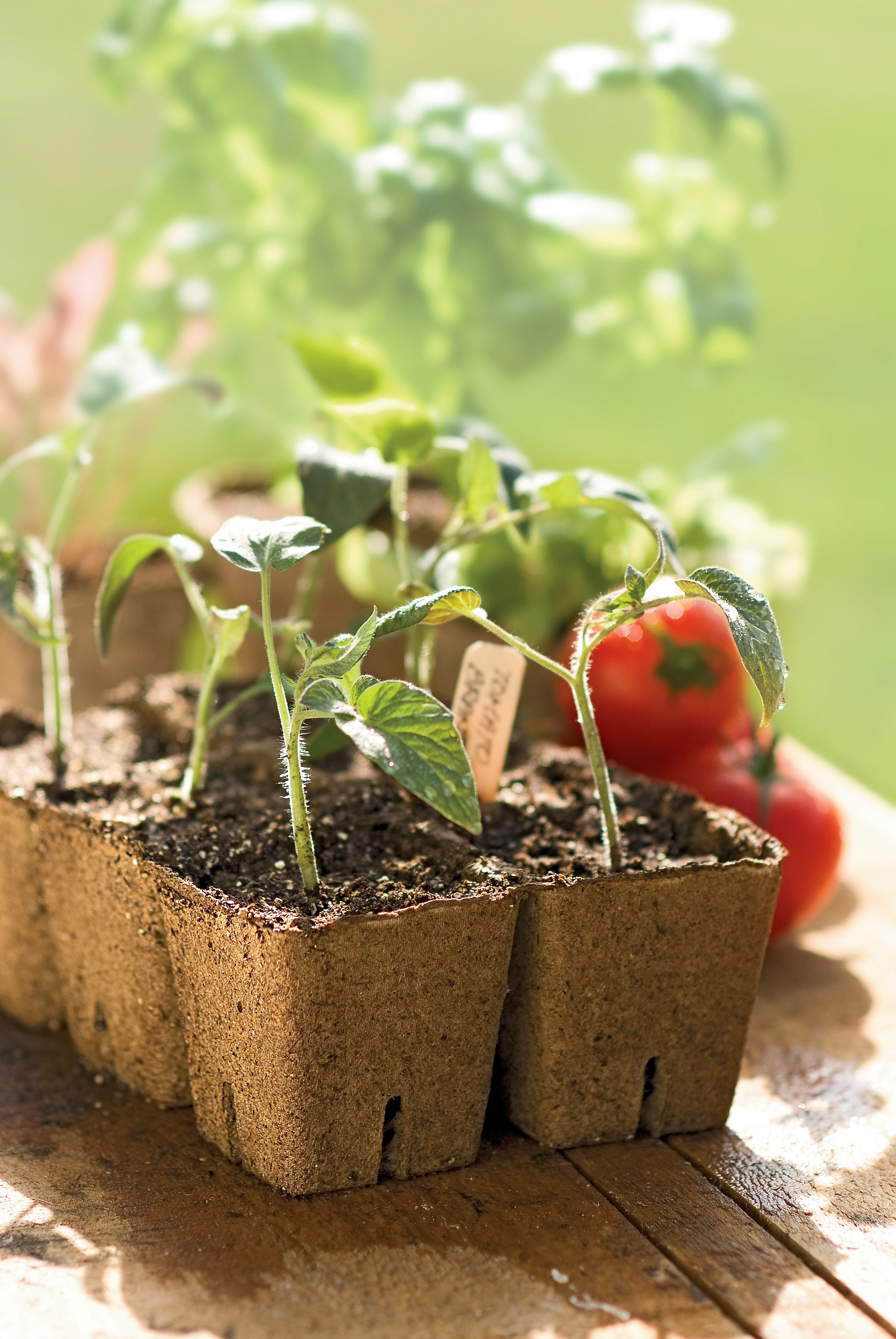 |
Eco-Friendly Cowpots basically planting pots made as a byproduct of processing cow poo. The poo is dried, composted and mixed with natural fibers creating a completely biodegradable pot which holds up well during growth and transplanting but biodegrades in the soil after several weeks. I watched an episode of Dirty Jobs which went through the whole process and it was very interesting and environmentally conscience but, unfortunately due to the price tag (about $1 a pot) these are a little over my budget since my newspaper pots are free. |
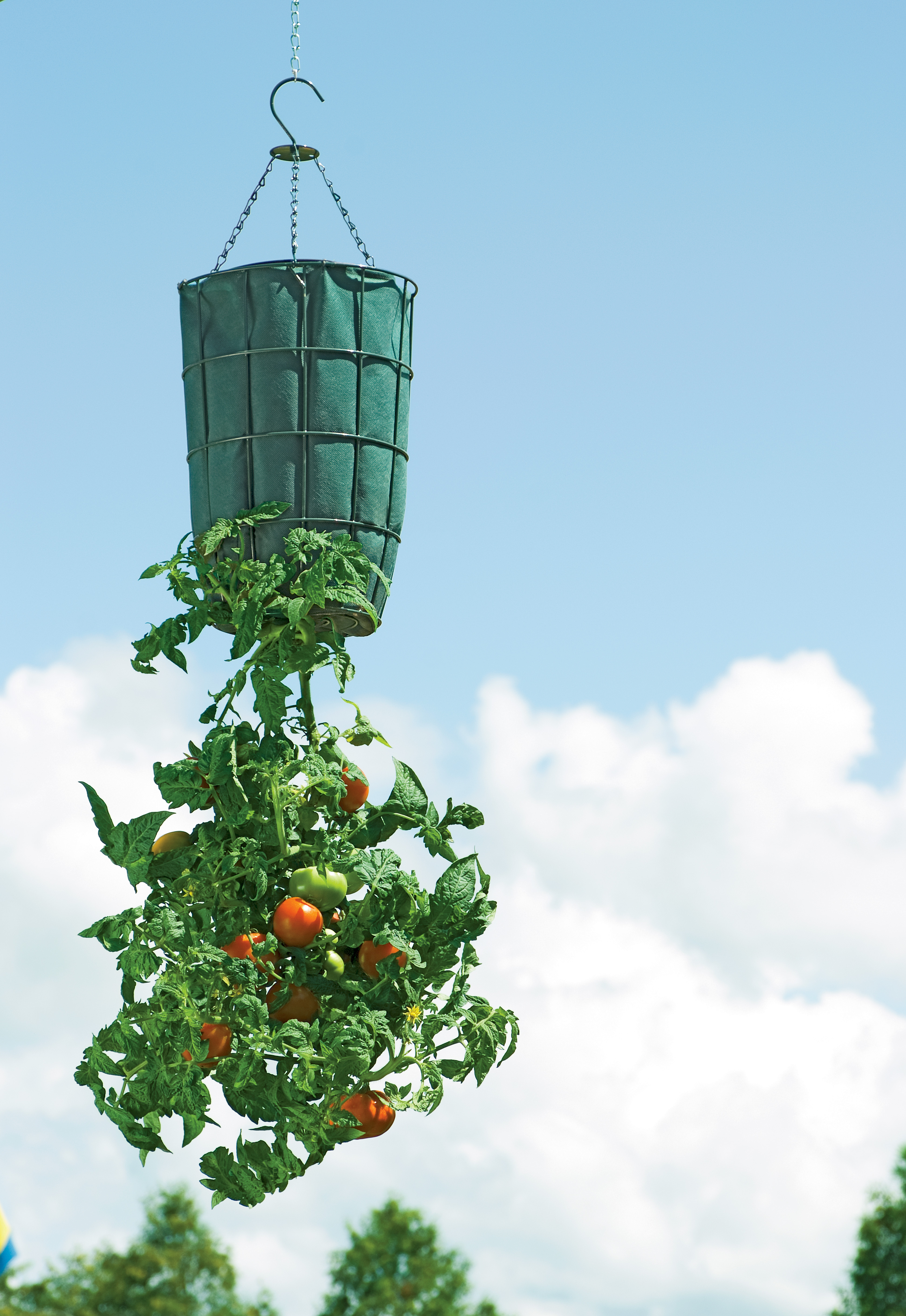 |
Gardener’s Revolution Planter – You have probably seen something similar advertised between gardening shows on HGTV (Topsy Turvy) , I know my daughter has and has been talking about growing tomatoes upside down for some time now. She even on her own came up with a ingenious design to do this (not 5 gallon bucket) which I will write-up when we get around to that project. In case you were wondering the improvement this year (or compared to the TV advertisement) it is the addition of a 1 gallon water reservoir which slowly releases water to the plant as neededSelf watering must be a big seller this year since there are also many other variances of self watering pots in many shapes and sizes with designs similar to the original (to my knowledge) the EarthBox. |
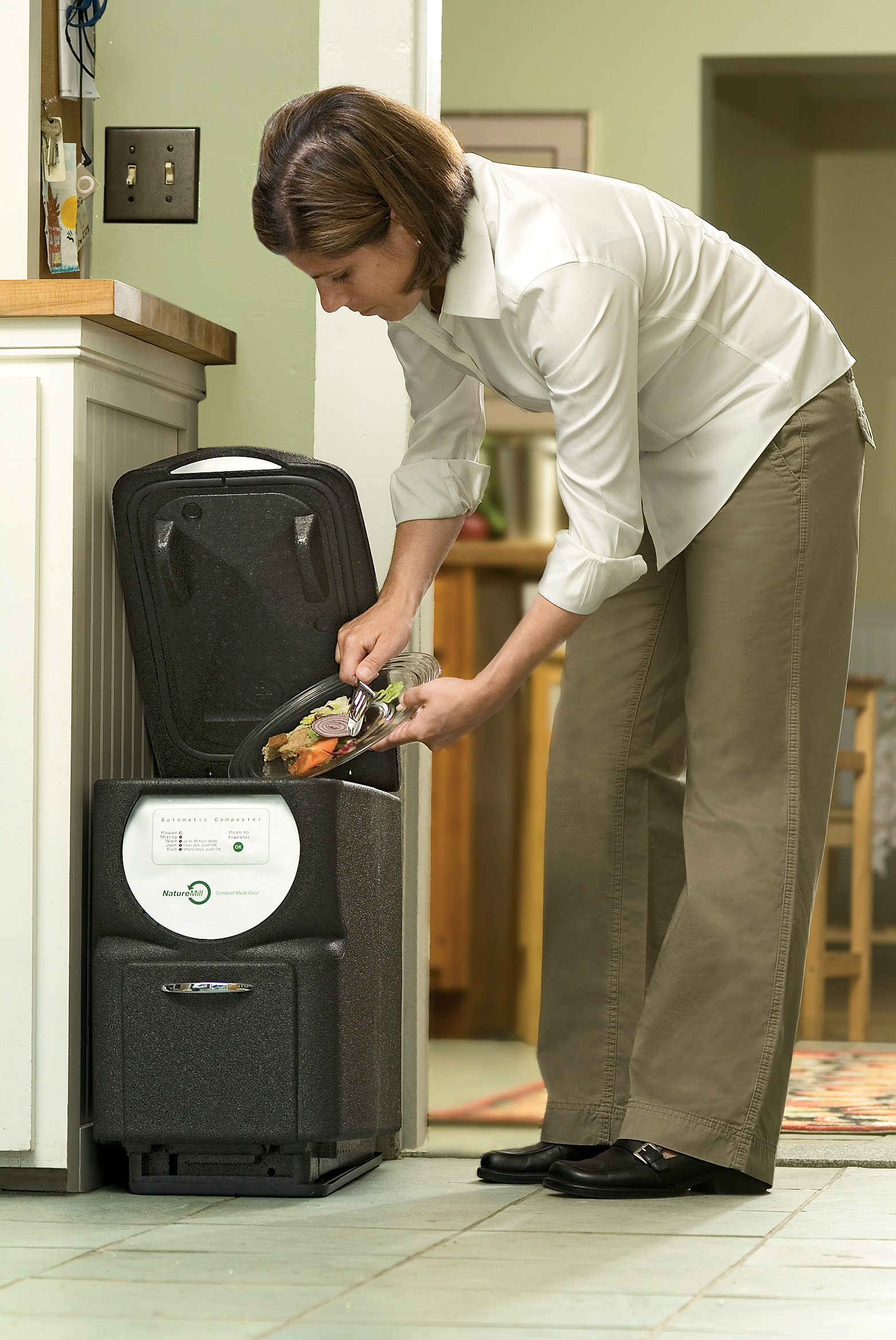 |
Now definitely in the gadget department the Push-Button Kitchen Scrap Composter can take your everyday kitchen scraps and turn them into compost in less than 11 days. The concept on this one is pretty simple:Food + Heat + Spinning = Compost
Of course it crossed my mind of creating something similar myself, but probably would end up burning down the house or if I was lucky just launch partially composted food across the living room at 50 miles per hour. Given the $299 price tag seems like I will be stuck to waiting 3-6 months for my compost to be created. Though it would be much more convenient than walking through the snow to add kitchen scraps to the compost. |
Tags: cheap, compost, garden seeds, growbox, led, outdoor plants, tomato plants, vegetables
Cheap Vegetable Seeds
15.3 years ago cheap, coupon codes, free, seed saving, seeds
Looking at my web logs I have seen the query for “cheap vegetable seeds” a few times so figured would be good to help people find what they are looking for. Being The Cheap Vegetable Gardener, I can do better than “Cheap vegetable seeds” how about some “free vegetable seeds” as well.
Cheap Vegetable Seeds
- Buy online — You can find a much greater selection and some great prices compared to your local home and garden center. For example right now:
- One of my favorites is Burpee Seeds, they have been around since 1876 and definitely know their stuff. The actually have a seed sale going on now where you get $15 off on order of $75 (just use code AFFB4A35) expires on 1/15
.
- The name is not too exciting but Generic Seeds
offers no thrills packaging with quality seeds and very reasonable prices and if you spend $20 or more shipping is on them.
- One of my favorites is Burpee Seeds, they have been around since 1876 and definitely know their stuff. The actually have a seed sale going on now where you get $15 off on order of $75 (just use code AFFB4A35) expires on 1/15
Free Vegetable Seeds (pretty much)
- Ask your neighbors — Notice your neighbor is a gardener, check if they want to go in on a seed order and share unless you really need 200 carrots this year.
- Harvest your own seeds — If your plants bolt to seed early this year, don’t pull them out let them create some seeds for next season. Notice your neighbor has some seeding plants, ask if you can get some (important part is to ask though)
- Get seeds from the grocery store — Before putting those vegetables in the compost bin, set the seeds aside to let them dry and you got some free seeds. Though a word of warning many vegetables are hybrids and may be infertile or not produce the same quality of product but hey its free.
- Check your spice rack — Many cases you can plant seeds from your spice rack. Some ideas, mustard seed, dill seed, coriander, poppy seed, celery seed. If your spice rack is lacking you can pay a few cents buy a teaspoon of organic spices in bulk, last time I bought dill seeds got about 100 seeds for $0.05.
- Seed swap web sites — Below I have listed a few links where you can share seeds with others. This is a great way to find some heirloom seeds you might not be able to find in stores/seed catalogs. In many cases people will offer seeds for free by just sending a SASE (Self Addressed Stamped Envelope) Just remember to pay it forward when you come into a plethora of seeds yourself.
Tags: cheap, compost, garden seeds, organic vegetables, outdoor plants, vegetables
Using used coffee grounds in your garden/compost
15.4 years ago cheap, compost, fertilizer
 I have wanted to leverage used coffee grounds in my garden/compost but not being a coffee drinker myself I never seemed to be able to have the right timing to find any at local coffee shops. Recently a colleague taunted me with a picture from his cell phone of a few bags in the coffee shop in our cafeteria at work and my quest began.
I have wanted to leverage used coffee grounds in my garden/compost but not being a coffee drinker myself I never seemed to be able to have the right timing to find any at local coffee shops. Recently a colleague taunted me with a picture from his cell phone of a few bags in the coffee shop in our cafeteria at work and my quest began.
After just two days I have accumulated 40 lbs of coffee grounds, now how can I use this stuff in my garden?
- Throw it in your compost: Coffee grounds are 1.45% nitrogen and contain calcium and magnesium to add some trace minerals you may not get from your other organic material. Coffee grounds are a green material (I know coffee is brown, but same idea as grass clippings) so you should add with at least equal amounts of brown material (leaves) but if you are like me my browns are way to high already.
- Add it directly to your garden: I have seen some arguments that coffee grounds are acidic, but others claim it loses most (or all) of its acidity during the brewing process. Due to my natural curiosity I need to know the answer. So the answer is, it has an average pH of 6.9 so for all intents and purposes, it is neutral. Though if you are really tired and forget to brew it, it will be somewhat acidic.
- Fertilizer: Sometimes your plants need a little boost in the morning as well. Simply add a couple cups of coffee grounds to a bucket of water and let it seep for 24 hours and apply to plant in the same way you would compost tea. Using gardener terms I can’t think of any better name for this as “coffee tea” If you are busy/lazy you also can use it as a side dressing on top of your soil and let the rain seep it for you.
- Annoy your pests to stay out of your garden: It has been said that coffee grounds can deter cats from using your garden as their own personal commode. There are also reports that it can deter slugs as well. I am not sure if it is the abrasive soil effect on their sensitive underside or just the cruel reality that with their slow pace they can’t do anything with the caffeine rush they get. Coffee grounds may annoy ants to convince them to move their home elsewhere.
- Feed your worms: To worms this stuff is like ice cream, if you listen carefully you may hear them cheer your name when you add a handful to your worm bin when your greens from the kitchen may be a little lacking.
According to Starbucks brochure I picked up on my last visit, you should use the coffee grounds within 3 weeks to get the most nutrient value, though if you are composting I am sure you can start out the process in the bag if you really want to. Given that 16.34 billion pounds of coffee is produced each year there is plenty for you to save from ending up in a landfill. This is a great way to help the environment while also adding value to your garden without affecting your pocketbook.
Tags: cheap, coffee grounds, compost, organic vegetables, outdoor plants, worms
Using WonderSoil for seed starting
15.4 years ago cucumbers, fertilizer, indoor seed starting, vermicomposting, wondersoil
I had great results using coconut coir last growing season it was great to work with, retained water great for young seedlings, and was economically priced. The only challenge was actually finding some to use this year. No luck in local stores, last year I only could find a single block in one hardware store. Online there are plenty of locations that sell them, but unless you have a need for a couple metric tons, the cost of shipping can be more than the the product itself.
Finally, I found a solution to my problem WonderSoil Their main product line consists primarily of the same core component but they sell it in many different convenient sizes for various uses. One great feature of the product is it expands up to 12 times its original size. For someone like myself that does not have the space to store bags of peat/potting mix around my already full garage this is a great feature. You can check out all of their products but the ones that felt matched my growing needs were the following:
- Shake, Water, and Plant — 1/2 inch mini wafers that can be added to any of your pots. In my case I underestimated the expansion of these little things and made a little mess and it overflowed on my table (apparently 3 was the magic number not 4)
- The Tube — There are larger wafers made specifically for 4 inch pots, in my case this would be newspaper pots
- Reground Wafers — This is basically a loose version available in 2 or 5 lb bags. This is a more economical option which I will plan on using when doing larger seed trays.
For Christmas I got indoor seed starting kit which came with pots/seeds/peat pellets. I decided this would be a great opportunity to do a little side by side comparison. From the start I was WonderSoil seemed like the obvious winner. After adding a little water, it fully expanded in just a few seconds and was fluffy and ready for me to drop a seed in, the peat was a swampy mess.
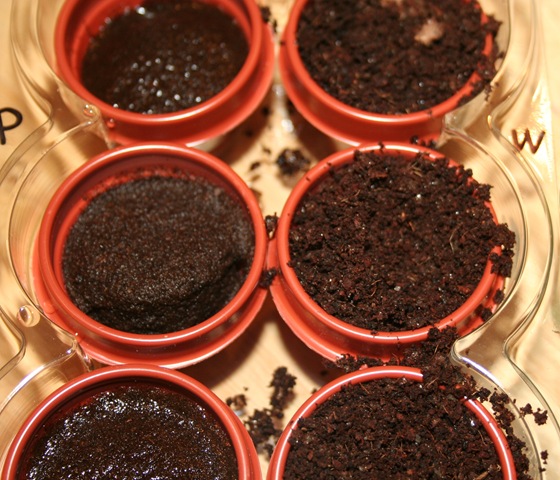
Peat pellets Left, WonderSoil Right
After a few minutes and fluffing with a fork the peat was ready to planting. I put cucumber seeds in both peat and WonderSoil pots and I will provide some updates on how things progress on my little experiment.
After the WonderSoil had some time to settle in my cheap LED grow box I did see some strange formations appear in the soil.
I little concerned I went back to their product and I believe this is their “water saving polymers” in action which I would assume is some sort of gel crystal which is supposed to save up to 50% water. They also boast about use of worm castings which I am definitely a fan of as well as addition of a balance of various micronutrients.
I will have to wait and see if the product produces as well as it claims, but I must say I am definitely impressed at this point and have high hopes for WonderSoil for this years seedlings.
UPDATES:
Christmas light LED grow box – Update #1 (WonderSoil)
Tags: cheap, compost, garden seeds, growbox, led, outdoor plants, vegetables, worms
The most profitable plants in your vegetable garden
15.4 years ago cheap, cilantro, garlic bulbs, organic, seedling, seeds, vertical gardening, winter garden
Many vegetables can be expensive to purchase by growing the most expensive vegetables in your garden and buying the least inexpensive vegetables at your grocery store you can easily help drop your food budget. This especially important for people like me with very limited space to grow everything that I consume.
It may be impossible to put a price on the satisfaction of bringing in a basket of produce fresh from your garden. As well as the enhanced flavors from having truly fresh produce from your garden compared to that of your local supermarket. Though when I was harvesting my potatoes this summer with my daughter I did have the thought, Would it have been smarter for me to grow something else in this space? I estimate out of the 4-5 square feet I used for these plants I probably got about $4-5 worth of potatoes.
I did a little research first to determine yields of various plants per square foot and secondly what the value (organic supermarket prices USD) of the yielded produce at harvest. Given I am a city dweller with a fairly small footprint for my vegetable garden (about 30-35 square feet) making decisions on what to buy at the supermarket and what to grow in the garden may be a huge money saver with just a few dollars invested in some seeds for your vegetable garden
Now from the results below you can see the winners for the most produce value per square foot are many of the leafy green vegetables/herbs (cilantro, lettuce, chives, dill, Swiss chard) next comes many of the larger vine plants (tomatoes, squash, pumpkins, peas) with many of the root plants taking up the rear. Now much of this makes sense where many of the vine plants grow on trellises and are allowed to spread, which I guess is sort of cheating the square foot rule but I will let it slide. Compared to the root plants whose production is entirely dependent on the space allowed in square footage they have to grow as well as these are normally inexpensive produce items to begin with.
| Vegetable | USD Value/SF |
| Cilantro | $ 21.20 |
| Arugula-Roquette | $ 20.92 |
| Green Salad Mix | $ 17.55 |
| Chives | $ 16.40 |
| Dill | $ 16.40 |
| Lettuce | $ 16.20 |
| Tomato, Cherry, small & medium | $ 15.57 |
| Turnip | $ 9.90 |
| Tomato, large | $ 9.50 |
| Squash, Winter | $ 8.40 |
| Tomatillo | $ 8.00 |
| Cucumber | $ 7.74 |
| Basil | $ 6.63 |
| Radish, Red | $ 6.22 |
| Pumpkin | $ 6.20 |
| Chard, Swiss | $ 6.14 |
| Celery | $ 6.00 |
| Squash, Summer | $ 5.96 |
| Choi | $ 5.70 |
| Peas, Snow | $ 4.50 |
| Pepper, Jalapeno | $ 4.50 |
| Squash, Summer, Zucchini | $ 4.17 |
| Onion, Bunching | $ 4.14 |
| Pepper, Bell | $ 3.60 |
| Brussels Sprouts | $ 3.59 |
| Carrots | $ 3.56 |
| Rhubarb | $ 3.25 |
| Squash, Winter, Butternut | $ 3.20 |
| Kale | $ 3.07 |
| Grass, Lemon | $ 3.00 |
| Peas, English | $ 3.00 |
| Onion, Bulb | $ 2.63 |
| Radish, White | $ 2.60 |
| Bean, Bush | $ 2.51 |
| Peas, Edible Pod | $ 2.50 |
| Artichoke, Globe | $ 2.40 |
| Cabbage, Chinese Napa | $ 2.24 |
| Squash, Winter, Delicata | $ 2.10 |
| Spinach, Spring/Fall | $ 1.80 |
| Leeks | $ 1.75 |
| Potatoes | $ 1.50 |
| Parsnips | $ 1.50 |
| Garlic | $ 1.37 |
| Squash, Summer, Yellow | $ 1.34 |
| Parsley | $ 1.31 |
| Corn | $ 1.25 |
| Squash, Winter, Acorn | $ 1.20 |
| Squash, Winter, Hubbard | $ 1.20 |
| Eggplant | $ 1.10 |
| Greens, Mustard | $ 1.10 |
| Rutabaga | $ 1.00 |
| Beet | $ 0.89 |
| Cabbage, Savoy | $ 0.80 |
| Broccoli | $ 0.80 |
| Kohlrabi | $ 0.75 |
| Cauliflower | $ 0.60 |
| Broccoli, Chinese | $ 0.60 |
| Cabbage | $ 0.50 |
Sources: http://www.mcgoodwin.net/pages/ppatch.html for plant yield information, http://shop.safeway.com for current produce prices
Now even with this information I will still plan on growing some onions and garlic since I more than likely would be forced to use dehydrated alternatives due to being too lazy to drive to the supermarket to buy fresh varieties. Though I may be adding some more herbs/greens to my garden this year.
One important thing to remember is you still have to eat the vegetables, throwing $20 worth or arugula or cilantro into the compost bin is not exactly a sound investment. You can also get higher yields by growing vertically, but don’t forget those tall plants produce a larger shadow so you may still need some extra ground space to support these alternate growing methods.
So go out and get some cheap vegetable seeds (or in many cases free) and plant some profitable vegetables in your backyard/patio garden this spring.
Tags: cilantro, compost, garlic bulbs, herb garden, organic vegetables, outdoor plants, pepper plants, tomato plants, vegetables
